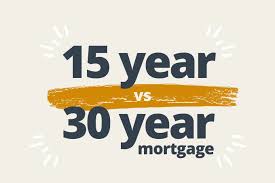Introduction: Choosing Your Mortgage Path in 2025
As of February 27, 2025, picking between a 15-year and 30-year mortgage shapes your financial future. With 30-year rates at 6.8% and 15-year at 6.2%, this choice—dominant among U.S. borrowers—balances monthly costs, interest savings, and flexibility. Here’s a deep dive into their pros, cons, and what fits your goals.
Key Differences
Payments, Rates, and Interest
Three factors define the split:
-
- Monthly Payments: 15-year doubles down; 30-year stretches out.
-
- Interest Rates: 15-year’s lower—6.2% vs. 6.8%.
-
- Total Interest: 15-year slashes long-term costs; 30-year piles them on.
For a $300,000 loan in 2025, 15-year payments hit $2,566 at 6.2%, while 30-year ease to $1,897 at 6.8%.
15-Year Mortgage Advantages
Lower Total Interest Costs
A 15-year term saves big. On $300,000:
-
- 15-Year: $161,880 interest over 15 years.
-
- 30-Year: $382,920 interest over 30 years.
-
- Savings: $221,040—huge for retirement-focused buyers in 2025.
Faster Equity Building
Pay $2,566 monthly, and after 5 years, you owe $236,000—$64,000 equity (plus 3% yearly appreciation to $347,000, netting $111,000). A 30-year’s $1,897 leaves $278,000 owed—$22,000 equity. Faster equity aids 2030 plans like a $50,000 home equity loan.
Lower Interest Rates
Lenders cut 15-year rates—6.2% versus 6.8% in 2025—reducing risk. That 0.6% drop trims $100 monthly on $300,000, amplifying savings.
15-Year Mortgage Disadvantages
Higher Monthly Payments
Payments soar—$2,566 versus $1,897 on $300,000—a 35% jump ($669). For a $5,000 monthly income, that’s 51% of your budget versus 38%.
Less Financial Flexibility
$2,566 ties up cash—$669 less for 401(k) ($200), kids’ college ($200), or a $10,000 emergency fund. A 2025 job dip could strain this commitment.
Stricter Qualification Requirements
Lenders cap DTI at 43%—$2,566 needs $5,967 income versus $4,411 for $1,897. A $60,000 earner qualifies for $220,000 at 15-year, $300,000 at 30-year—limiting options.
30-Year Mortgage Advantages
Lower Monthly Payments
Spread $300,000 over 30 years at 6.8%—$1,897 fits a $4,500 income (42% DTI). Add $300 taxes and $125 insurance ($2,322 total)—still $244 below 15-year’s full cost.
More Investment Opportunities
Save $669 monthly versus 15-year? Invest at 7% annually—$669 grows to $260,000 in 30 years, outpacing $221,040 interest savings. Or stash $5,000 for emergencies by 2026.
Greater Buying Power
Lower payments boost loan size—$60,000 income nets $300,000 at 30-year, not $220,000. In 2025’s $350,000 median market, that’s a house, not a condo.
30-Year Mortgage Disadvantages
Higher Total Interest Costs
$382,920 interest on $300,000 at 6.8%—$221,040 more than 15-year. That’s a $300,000 home costing $682,920 total—steep for long-haul savers.
Slower Equity Building
Five years at $1,897? $278,000 owed, $72,000 equity with appreciation—$39,000 less than 15-year. Slow equity delays a 2030 $50,000 reno loan.
Higher Interest Rates
6.8% versus 6.2% adds $100 monthly early—$36,000 extra over 30 years. In 2025’s rate climate, that gap stings.
Making the Decision
Factors to Weigh in 2025
-
- Goals: $221,040 saved (15-year) or $669 monthly flexibility (30-year)?
-
- Finances: $6,000 income, $5,000 savings, 720 score—15-year doable?
-
- Market: 3% appreciation, 6.8% rates—buying $350,000 now smart?
A Hybrid Approach
Take a 30-year at $1,897 but pay $2,566 when flush—shave 10 years off, save $150,000 interest. No prepayment penalties at Calculatingamortgageloan.com? Perfect. Flexibility meets savings.
Conclusion: Tailor Your Term
In February 2025, a 15-year mortgage at 6.2% ($2,566) saves $221,040 on $300,000—ideal for a $90,000 earner staying 15 years. A 30-year at 6.8% ($1,897) frees $669 monthly—better for a $60,000 earner with kids or stocks. Test both via Calculatingamortgageloan.com, consult advisors, and note: refinance at 6% in 2026 if rates dip. Your call hinges on cash flow, plans, and risk comfort—choose wisely.
